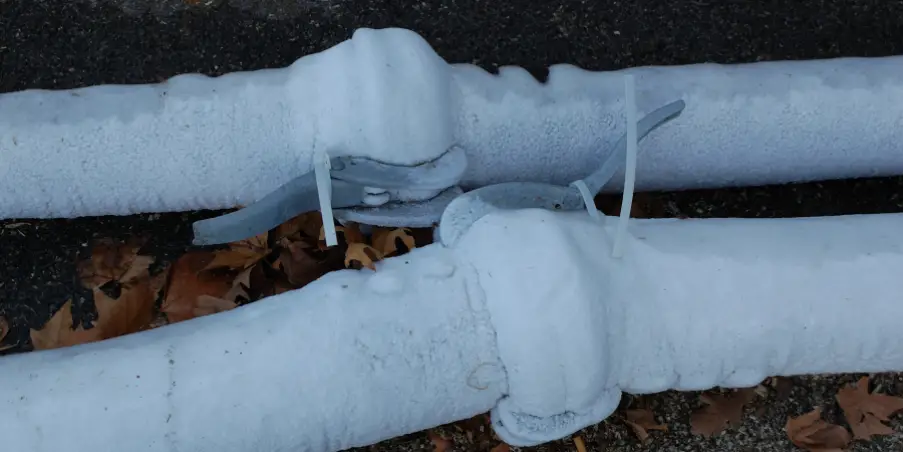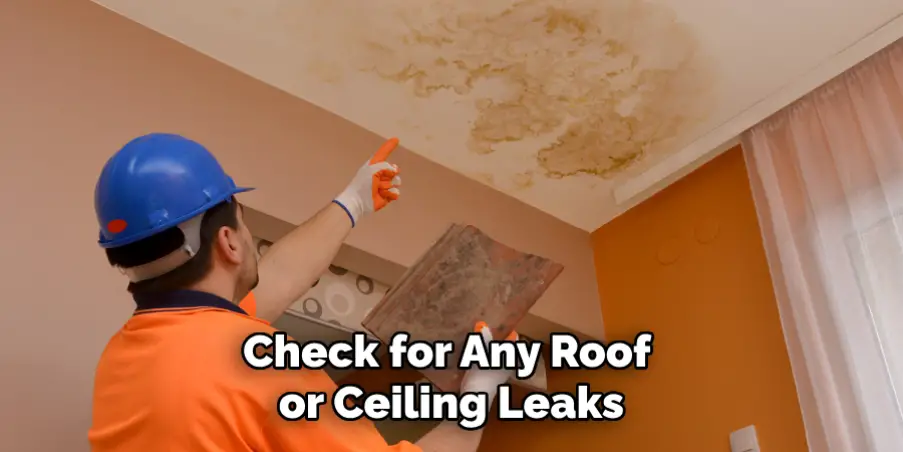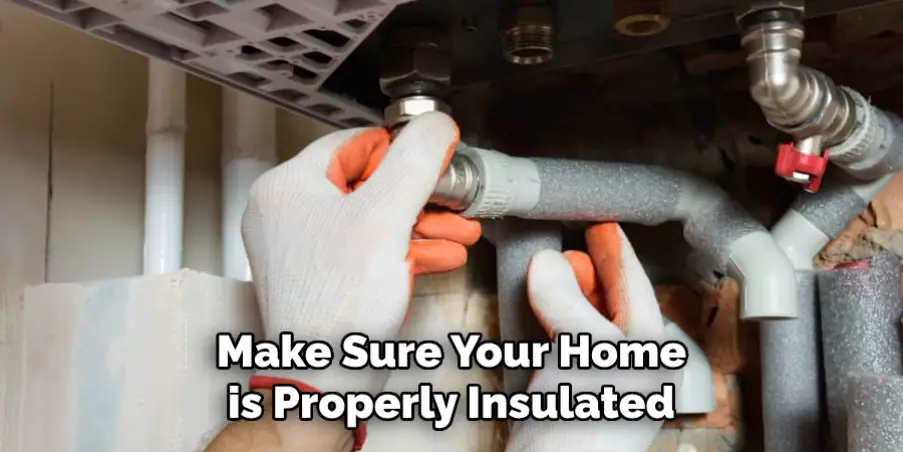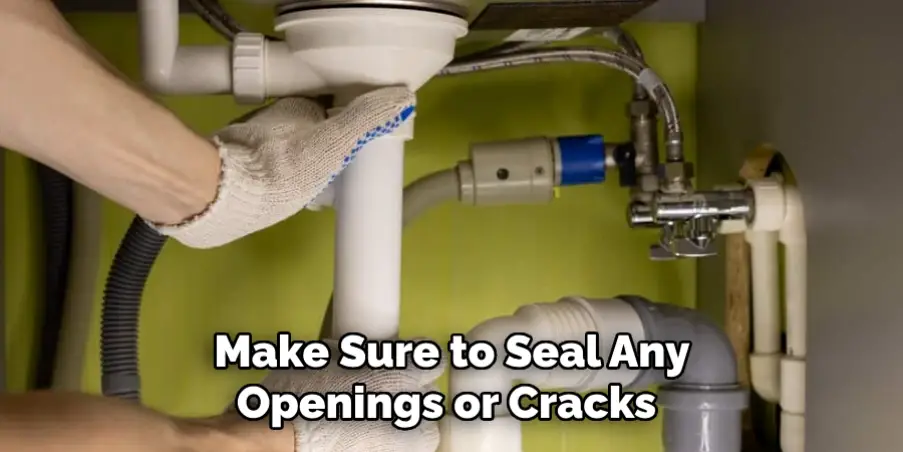Winter is upon us, bringing a chill in the air which means there’s a chance of your attic pipes freezing.

This can cause all sorts of issues when temperatures plummet, eventually leading to costly repairs. Fortunately, there are proactive steps you can take now to make sure your attic pipes remain unfrozen during even the coldest winter months.
In this blog post, we’ll look at how to keep attic pipes from freezing so you don’t have to worry about any surprises later on!
10 Best Methods on How to Keep Attic Pipes From Freezing
1. Insulate Your Attic:
One of the most effective ways to prevent pipes from freezing in the attic is to properly insulate it. This will help maintain a consistent temperature in the space, keeping it above freezing point and preventing pipes from freezing. Make sure to insulate any exposed pipes as well. This could also help in reducing your heating bills!
2. Seal Any Air Leaks:
Another way to keep your attic pipes from freezing is to seal any air leaks that may be present. These can cause temperature fluctuations which can lead to frozen pipes. Use caulk or weatherstripping to seal gaps around windows, doors, and other openings. This will also improve the overall energy efficiency of your home. While you’re at it, check for any roof or ceiling leaks and get them fixed to prevent water from coming into contact with your pipes.

3. Increase Attic Ventilation:
Proper ventilation in the attic is crucial for maintaining a consistent temperature and preventing pipes from freezing. Make sure your attic has enough vents to allow proper air flow. This will also help prevent moisture buildup which can lead to mold growth and damage to insulation.
4. Use Heat Tape:
For pipes that are already prone to freezing, you can use heat tape to keep them warm. This is a specially designed electric heating element that can be wrapped around the pipe and plugged into an outlet. Make sure to follow the manufacturer’s instructions carefully and never leave heat tape on for extended periods of time as it can be a fire hazard. Using heat tape is a quick and easy solution for preventing frozen pipes.
5. Let Faucets Drip:
When temperatures are extremely low, you can prevent pipes from freezing by letting faucets drip slowly. This will relieve pressure in the pipes and keep water flowing, making it less likely to freeze. Keep in mind that this method may slightly increase your water bill, so use it sparingly. This is not a long-term solution and should only be used in extreme weather conditions.
6. Keep Your Attic Warm:
If your attic has an HVAC system, make sure to keep it running during colder months to help maintain a warm temperature in the space. You can also use space heaters or heat lamps for added warmth. Just make sure to follow safety precautions and never leave them unattended. In addition, keeping your attic warm can also prevent damage to any stored items or belongings.

7. Open Cabinet Doors:
For pipes that are located in kitchen or bathroom cabinets, leaving the doors open can help keep them from freezing. This allows warm air from your home to circulate around the pipes and prevent them from getting too cold. Just remember to keep any harmful cleaning products or chemicals out of reach if you have small children.
8. Keep Garage Doors Closed:
Many homes have pipes running through the garage, which is usually not insulated. Keeping your garage doors closed can help prevent cold air from entering and affecting the temperature of these pipes. If you have any exposed pipes in the garage, make sure to insulate them as well. This will also help in maintaining a warm temperature for your car and keeping it from freezing.
9. Monitor Your Pipes:
Lastly, it’s important to regularly check your pipes during the winter months. Look out for any signs of freezing such as reduced water flow or strange noises coming from the pipes. If you notice any issues, take action immediately to prevent further damage. It’s better to be proactive and prevent frozen pipes rather than deal with the consequences later.
10. Use a Smart Thermostat:
Investing in a smart thermostat can be a great way to prevent pipes from freezing. These devices allow you to control the temperature in your home remotely and also have features such as temperature alerts if it drops below a certain point. You can also set the thermostat to automatically turn on heat if temperatures reach dangerous levels.
Following these methods on how to keep attic pipes from freezing will not only save you money in potential repairs but also give you peace of mind during the winter months. Take the necessary precautions now and enjoy a cozy, worry-free winter season!
Additional Tips and Tricks to Keep Attic Pipes From Freezing
1. If you live in an area with extremely cold temperatures, consider insulating the entire attic space to keep it warmer.
2. Keep your attic door closed and seal any drafts around the edges to prevent colder air from entering.
3. Use heat cables or heat tape on exposed pipes to increase the temperature and prevent freezing.
4. Keep your attic well-ventilated, especially if it contains appliances such as a water heater or furnace. Proper ventilation can help regulate the temperature in your attic and prevent pipes from freezing.
5. Make sure your home is properly insulated, especially in the attic. This will not only help prevent frozen pipes but also save energy and money on heating costs.

6. In extremely cold temperatures, leave a faucet dripping to keep water flowing through the pipes and prevent them from freezing.
7. If you have any exposed pipes in your attic, consider wrapping them with insulation to keep them warm.
8. During particularly cold spells, open up cabinets and doors under sinks to allow heat from the house to reach the pipes.
9. Check for any air leaks or cracks in the attic walls or ceiling and seal them to prevent cold air from entering.
10. Consider installing a freeze alarm that will alert you if the temperature in your attic drops below a certain point, giving you time to take action before pipes freeze.
11. If you plan on being away from home for an extended period of time, set your thermostat to at least 55°F (12°C) to keep the attic and pipes warm.
Following these tips and tricks can help you prevent attic pipes from freezing and avoid costly repairs or damage to your home. Remember to also regularly check for any signs of frozen pipes, such as decreased water pressure or no water flow, and take immediate action if necessary. Stay warm and safe during the winter months!
Frequently Asked Questions
What Can Cause Attic Pipes to Freeze?
Pipes in your attic can easily freeze when temperatures drop below freezing. The lack of insulation and inadequate ventilation are the main culprits for this problem. If your attic is not properly insulated, it allows cold air to seep in and surround the pipes. Also, if there is no proper ventilation, warm air cannot circulate and keep the area around the pipes from getting too cold. Other factors that can contribute to frozen pipes in the attic include poor sealing around openings and cracks, lack of heat in the attic space, and extreme weather conditions.
How Can I Tell If My Attic Pipes Are Frozen?
The first indication that your attic pipes are frozen is when there is no water coming out of the faucets or you notice a decrease in water pressure. You may also hear strange noises coming from the pipes, such as banging or gurgling sounds. In some cases, you may even be able to see frost on the pipes themselves. If you suspect your attic pipes are frozen, it’s important to act quickly to prevent any further damage.
What Should I Do If My Attic Pipes Freeze?
If you suspect your attic pipes are frozen, the first step is to turn off the water supply to prevent any potential damage. You can then attempt to thaw the pipes using a hairdryer or heating pad. It’s important to never use an open flame or high heat source as this can cause damage or even start a fire. Once the pipes have thawed, check for any cracks or leaks and repair them immediately. To prevent future freezing, make sure to properly insulate and ventilate your attic space.
Can I Prevent Attic Pipes From Freezing?
Yes, there are several steps you can take to prevent your attic pipes from freezing. As mentioned before, proper insulation and ventilation are crucial in keeping the attic space warm and dry. Additionally, make sure to seal any openings or cracks that may allow cold air to enter. You can also install heat tape on the pipes or use a space heater in the attic during extreme weather conditions. It’s important to regularly check for any issues and address them promptly to avoid frozen pipes in the future.

Conclusion
Now you know how to keep attic pipes from freezing and what to do if they do freeze. By properly insulating, ventilating, and sealing your attic space, you can prevent this common problem and avoid costly repairs. Regular maintenance and being aware of warning signs can also help you catch potential issues before they become a major problem.
Don’t let frozen pipes in the attic disrupt your daily life – take action now to protect your home. So remember, when it comes to keeping your pipes safe from freezing temperatures, insulation is key! Keep your attic pipes warm and dry and you’ll have peace of mind all winter long. Stay warm, stay safe!

